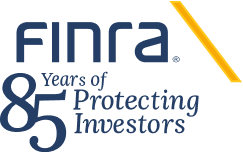Breakpoint discounts are volume discounts to the front-end sales load charged to investors who purchase Class A mutual fund shares. The extent of the discount depends on the amount invested in a particular family of funds. For example, a mutual fund might charge a front-end load of 5.75 percent for share purchases of less than $50,000, but reduce the load to 4.50 percent for investments between $
FINRA Rule 2360(b)(23)(C) requires member firms conducting transactions in exchange-listed options to establish fixed procedures for allocating options exercise assignment notices to short options positions in their customer accounts. Firms may elect to allocate exercise assignment notices on: (1) a “first in-first out” basis (FIFO); (2) a random selection basis; or (3) another equally random
Formulario de reclamo de inversionistas para imprimir
(a) Members are required to report transactions (other than transactions executed on or through an exchange) in OTC Equity Securities, including secondary market transactions in non-exchange-listed Direct Participation Program securities, and Restricted Equity Securities to the OTC Reporting Facility in compliance with the Rule 6600 and 7300 Series, as well as all other applicable rules and
The Anti-Money Laundering, Fraud and Sanctions topic of the 2025 FINRA Annual Regulatory Oversight Report (the Report) informs member firms’ compliance programs by providing annual insights from FINRA’s ongoing regulatory operations, including (1) regulatory obligations, (2) findings and effective practices, and (3) additional resources.
With over 20,000 companies whose shares trade either on a U.S. exchange or in over-the-counter markets, there’s ample room for confusion. Fundamental research and an understanding about the way in which stocks are listed and traded can go a long way toward helping you make sound investment decisions.
As we approach the end of the first quarter of 2024, FINRA’s Cyber and Analytics Unit (CAU) proactively warns member firms of continuing social engineering campaigns involving fraudulent representations of individuals purporting to be FINRA representatives. As with many types of social engineering campaigns, threat actors may use website domain names (sites) that are similar to FINRA.org (e.g., Finra-latam.org, finra.world, finra.eu), fraudulently use FINRA’s logo or purport to be legitimate FINRA employees. These domains and individuals are not associated with FINRA.
October 1999
Contingency Planning Activities
Although most businesses have worked, and are continuing to work, diligently to ensure that their Year 2000-related issues will be resolved in time, everyone must anticipate that some things may be overlooked, ignored, or not completed on or before December 31, 1999. In addition, businesses should consider events beyond their control that could
August 1999
Broker/Dealer Day Zero Preparation
Over the weekend of January 1 and 2, 2000, broker/dealers will begin assessing the need to invoke their written contingency or disaster recovery plans. These plans should reflect potential scenarios that could be encountered duringthis unique transition. Firms will implement contingency and disaster recovery plans to the degree necessary to ensure
By Kara Williams and Gargi Sharma
FINRA’s Special Investigations Unit (SIU) anticipates continuing our focus on Russia-related sanctions and evasion tactics, as well as other priority threats such as new account fraud, reporting of cyber-events and cyber-enabled fraud, market manipulation and trading-related frauds and Ponzi schemes. While SIU will focus our investigative resources on these
